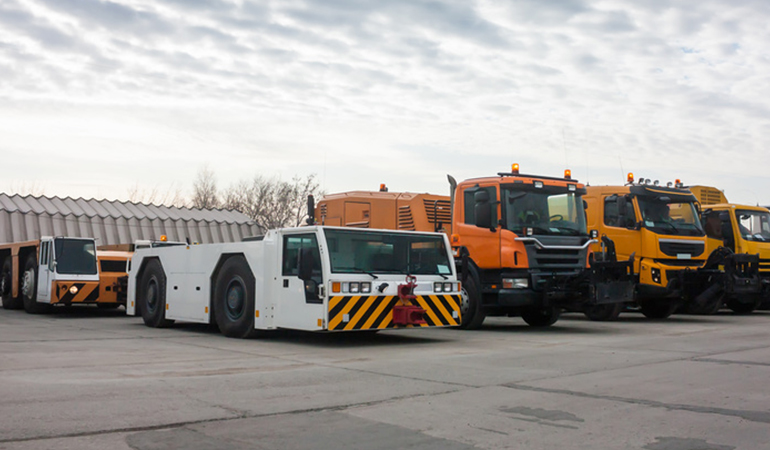“Big Data” is fast becoming a stalwart buzzword of the 21st century business lexicon, yet how many who casually toss it around have a strong grasp for exactly what it is and does, and can offer? In a watered-down nutshell, big data is the process of sifting through enormous quantities of raw data and identifying often subtle trends, like indicators of failure. But how exactly is Big Data positively impacting fleet maintenance today? Is it farfetched and futuristic, or does it provide actionable intelligence right now?
A Primer on Big Data
The terminology “Big Data” does not thinly veil what it is: it is essentially a collection of enormous quantities of raw data which is collected via the use of sensors on equipment. Yes, this is a radically simplified description of data, but for the sake of this article, it describes the function well enough. How much data are we talking here? Nextraq, a company which collects data from the truck industry, reports 13 billion data tracks daily from customer vehicles. These include metrics like vehicles speeds, rapid deceleration, over-speed, hard cornering and braking.
Big Data is only predicted to grow faster and expand exponentially, with some sources estimating data in 2025 may be ten times that of 2016. As data collection spreads and becomes even more mainstream, the cost of adding it to fleet of industrial machinery will come down, and new equipment will most certainly be equipped with it off of the assembly line. The idea is certainly not new, as any automotive technician can attest to; all vehicles built in or imported to the U.S. have been equipped with onboard diagnostics since the 1990s which record vehicles health through the language of fault codes. The system provides real time data which is easily viewed with a scanner or mobile app supporting the function, so it is a fairly easy thing to transpose that to the internet of things (IoT) for mass dissemination.
But what exactly is big data, beyond just a bunch of data? Simply put, it is datasets which are too large to be processed through traditional or commonly used software tools to capture and curate. In other words, it is data too complex and large to be run through typical desktop programs to garner the desired results. There is not a specific size cutoff to meet the definition, since all organizations are equipped and staffed differently.
Industries Using Big Data to Enhance Fleet Maintenance Management
Ground support equipment is a small, niche industrial market segment but the equipment is similar enough in design to other types of industrial fleets that we can get an idea of what benefits are in store for your fleet.
Over-the-road truck is an industry which has fully embraced the benefits of big data analysis. Trucking is an application where minute changes and gains per vehicles end up netting huge gains across the fleet. An increase of 1mpg per vehicle can easily save hundreds of millions of dollars for the fleet. Determining an indicator of breakage before it occurs can spare many hours of downtime and additional cost, as well as constructing accurate mean times between failure based on real fleet data rather than engineering calculations may under up providing longer times between repair and/or overhaul, or conversely, could end up confirming the engineer suggestions or even shortening duration which would reduce hard failures.
What Metrics Can Be Used from GSE?
Powered GSE share common systems and components with semi-trucks. Generators, diesel aircraft tugs, and air conditioner units all employ diesel engines which are sometimes identical to those found in semi-trucks. What does this mean? It means that there will be no issue with pulling the same metrics from powered GSE as there would be from a semi-truck.
Here are some examples of data which can be utilized for fleet health of GSE:
- Monitoring engine performance. This is speaking on a strictly broad scale, across an entire fleet of similar equipment. For instance, if you use identical ground power units in Southern California, Minnesota, and Miami, Florida, you can track trends over the course of extended periods of time (a month, three months, a year, etc.) and compare statistical trends. For example, you might find that engines prove to be on average 3% less efficient in high-humidity environments that temperate climates, or that they wear 12% faster in severely cold climates over mild climates.
- Identifying areas of failure or weakness. Over the course of millions of pieces of data, trend analysis might reveal points of failure which have not been identified elsewhere. For example (not linked to any known cases), a trend may develop across an entire fleet which indicates that condensers fail prematurely on mobile air conditioning units.
Prohibitive Factors
Employing Big Data to maintenance analysis provides a lot of really great information to the end user… eventually. And if it is combed thoroughly and correctly. Otherwise, Big Data is nothing more than a pile of rubbish taking up expensive space on a cloud network.
The problems with big data can be broadly categorized into a couple of camps: cost and implementation.
Cost is a sufficient explanation in and of itself and requires little in interpretation. Big data holds tremendous benefits and unlocks new worlds of oversight into the subtleties of fleet operation, management, and maintenance modeling. But ‘fleet’ is the operative word here: it is best used over a fleet of vehicles or equipment to garnish a better understanding of overall fleet health and preparedness. The capabilities of big data are tailored best for use over enormous quantities of data produced by highly complex machines, and lots of them. While powered GSE, particularly remote controlled aircraft tugs, are complex machines, they still are much less complex than a jet airliner.
- The high cost of big data for the end user comes from several sources and reasons: The massive suite of technology required to process data, to include specialized servers, databases outside of standard off-the-shelf software, etc.
- Technology to support and collect the data to be analyzed. Not all equipment is ready to connect to the Internet of Things or similar sensor arrays off the shelf. It takes time, money, and most significantly expertise to get a data analysis program off of the ground.
- Training or hiring personnel. The human element is consistently the most costly component of all organizations. They are the hardest to asset to bring onboard, and by far the hardest to replace. In order to utilize big data effectively, you must train current staff or hire trained staff, both of which are costly.
Implementation is closely intertwined with cost because the one requires the other. So what level of fleet demands the implementation of big data? There are no hard and fast rules in this. If your organization consists of just a few similar items at a centralized location, or a small collection of diverse equipment, tapping into big data probably will not provide results which will make the “juice worth the squeeze” of purchasing equipment, implementing computerization, and adding or training personnel. Of course, GSE is not cheap to begin with but everything is centered on scale. A few hundred thousand dollars or even a couple of million dollars in equipment just may not quite warrant similar sums in what essentially equates to preventative maintenance. Big data offers quite a lot more than PM, but that may be all it is able to provide to smaller operations, if anything at all.
Other Considerations
Big data has found itself in all kinds of industries, from healthcare, to education, to manufacturing. The beauty behind data is that the concept is the same regardless of what the source or the information received. It is all about nuance; what are the subtle trends which reveal themselves over time and exposure. What can a slight variance in voltage over the course of a year mean about a given system? Does it mean premature wear or failure?
Big data is still an emerging technology, growing at exponential rates. What it provides today may be eclipsed in a year from now. Conversely, if you have overbought based on your real needs, future advances may still elude your needs.
Conclusion to Big Data in fleet maintenance
This article is an overview of the big data from the high flight levels; it is so complex, so vast, and has so many components to be utterly impossible to describe in any other way in such a short prose. Big data is already proving itself in predictive analysis of fleets of equipment, revealing subtlety and nuance which have never before been revealed. But it is expensive, both to implement and sustain. It requires a keen mind who can transpose raw data into tangible, actionable information for operationally minded people. If your fleet of equipment consists of technologically superior equipment, staying perfectly synchronized with fleet and system health, keeping your investments at peak operating efficiency.
Using big data to your advantage is only one way to improve your ground handling. Get even more tips for your hangar operations in our free eBook!



Comments